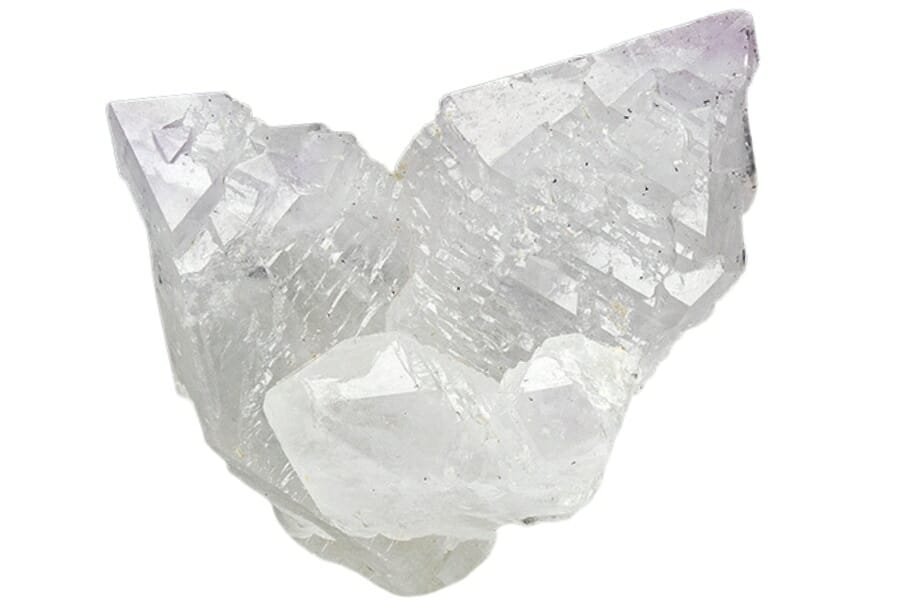Quartz and glass are two materials that often catch our eye because they sparkle and are clear. At first glance, they might look a lot alike, especially when polished quartz looks a lot like glass.
But if we look a little closer, we can see that they are very different because of where they came from and what they are made of. Quartz is a natural mineral that comes from the Earth.
Glass, on the other hand, is made by melting and then cooling materials. Even though they are different, both have been used in different ways throughout history.
This shows how their unique and similar qualities have made them useful in both natural and man-made environments.
This article will talk about how you can easily tell them apart. We’ll look at the differences and similarities between these two gems, so you should be able to tell them apart.
Quartz vs. Glass – The Major Differences
We’ll start by talking about how they’re different. They also have some things in common, but these differences stand out the most when you look at them side by side.
Appearance – Glass looks more homogenous

Quartz and glass can sometimes look the same, but there are important differences if you know where to look. Let’s start by thinking about shape. Crystals of quartz are often found in nature.
Most of these crystals have six sides, and the tips can be sharp and pointy. They can look like a fancy tower that grew out of the ground. You wouldn’t see a natural shape like this in glass.
Quartz, on the other hand, forms naturally, while glass doesn’t. People instead make glass, which is often melted and then shaped into different shapes. This means that glass can be very smooth and have no rough edges or interesting natural shapes.
Because of this, things like windows and bottles made of glass look more even and uniform. Also, quartz may have lines or patterns inside it because of how it was made, but glass usually doesn’t have these unless they were put there on purpose.
So, you can often tell the difference between quartz and glass by looking at the shape, patterns, and how smooth the surface is.
Chemical Composition – Quartz is composed of silicon dioxide
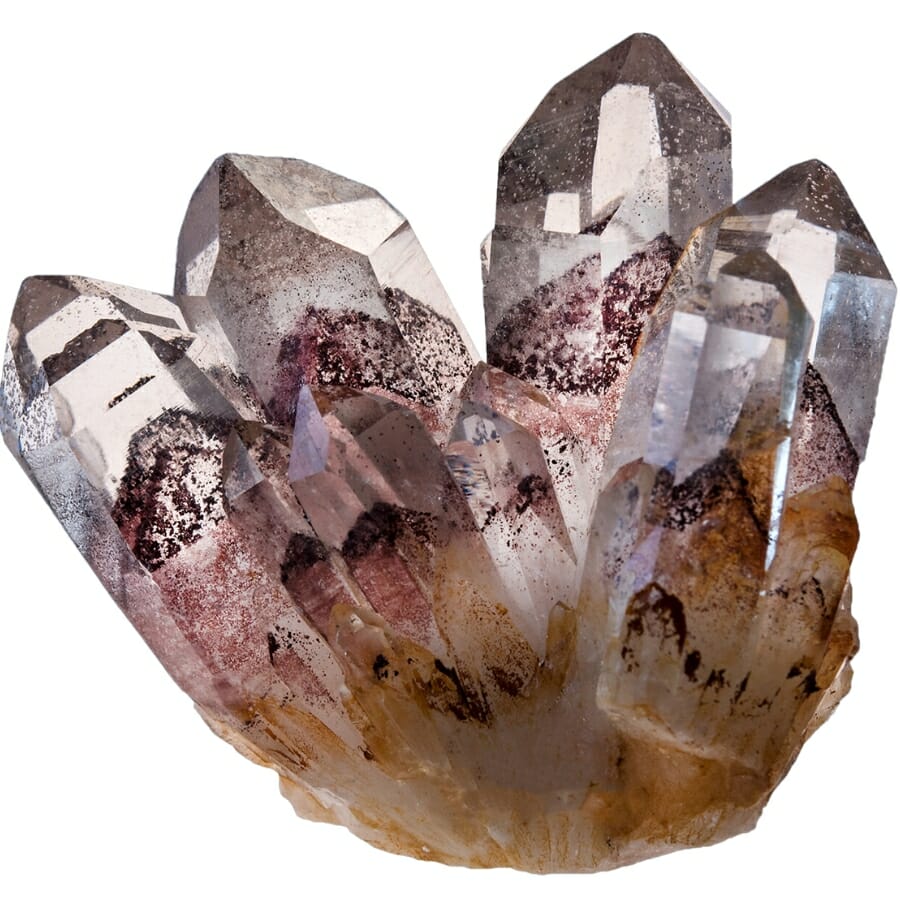
When we talk about what something is made of, we discuss its chemical composition. Quartz and glass might look similar but are made of different things. Let’s look into this a little further.
Quartz has a simple make-up. It is made of silicon dioxide. Think of two building blocks: one is silicon and the other is oxygen. Put them together in a certain way, and you get quartz.
Now, glass is a bit more complicated. At its core, glass also has silicon dioxide, just like quartz. But, when we make glass, we often add other things. The extra ingredients help the glass melt at lower temperatures and make it easier to shape.
So, think of quartz as a natural material from the Earth. It is just silicon and oxygen. On the other hand, glass is like a recipe that starts with silicon dioxide and then adds a few more things to the mix.
Because of these differences in what they are made of, quartz and glass can look, feel, and act differently.
Formation – Glass is man-made
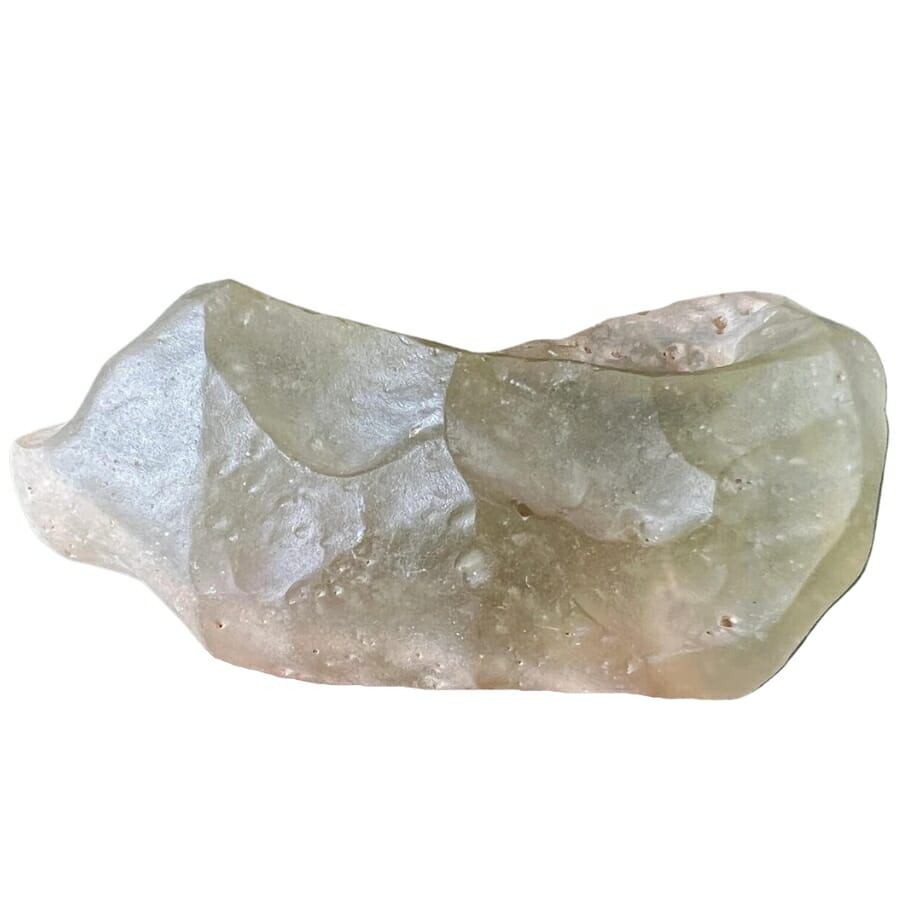
Quartz and glass come into being in completely different ways, like the difference between finding a natural treasure and crafting a handmade gift.
Quartz is formed by nature. Deep inside the Earth, where it’s really hot and there’s a lot of pressure, materials slowly come together. As time passes, these materials cool down and form crystals.
It takes a long time, and nature does all the work. We can find quartz in various parts of the world, often hiding in rocks or sandy areas.
Glass, however, is made by people. To make glass, we start by heating sand until it melts. This melted sand is then cooled down quickly to form glass.
We can add other ingredients to give the glass special properties during the process, like making it tougher or changing its color.
So, while quartz is a work of nature that takes a long time to form, glass is a human-made creation that we can produce relatively quickly.
Fluorescence – Quartz can fluoresce
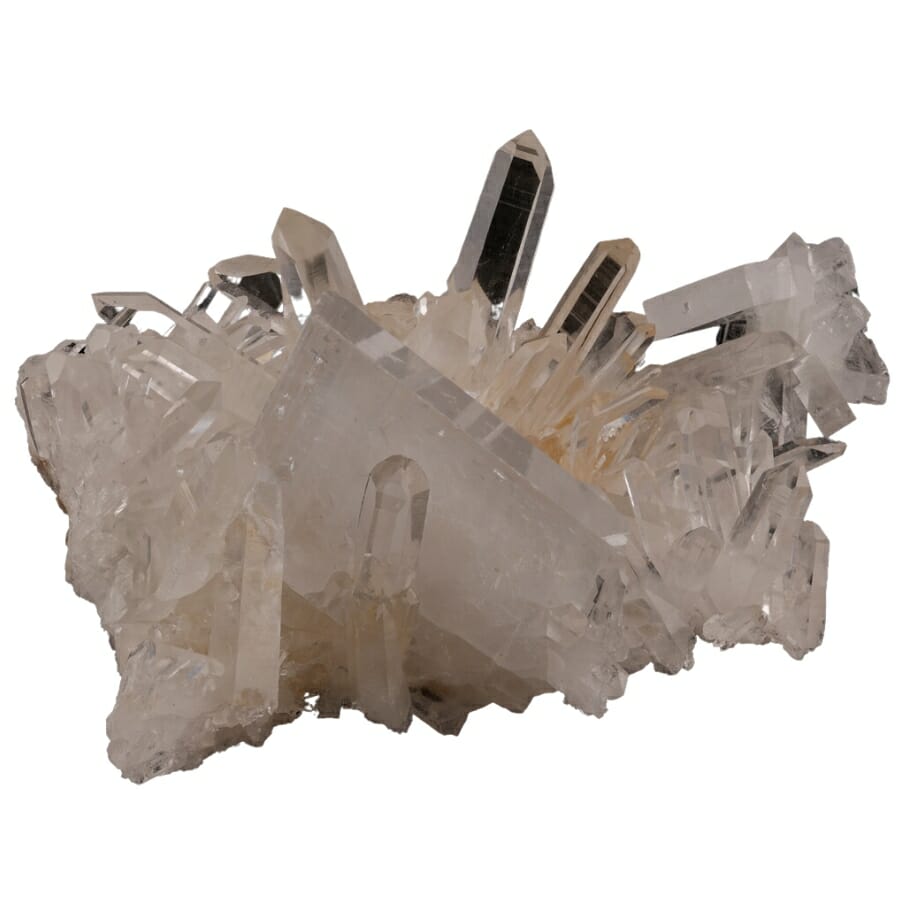
Have you ever seen things glow under a special light, like on cool rides or in a haunted house? Fluorescence is the word for that glow. Let’s look at how fluorescence works in both quartz and glass.
Under ultraviolet (UV) light, which is the kind of light that makes things glow, quartz can shine. When you shine a UV light on some types of quartz, they can glow in beautiful colors.
This happens because quartz contains minerals that react with light. Some quartz can glow bright blue or green, for example. It’s like the stone is hiding a surprise!
On the other hand, glass doesn’t naturally have this ability to glow. Most windows and bottles we see daily don’t glow under UV light. But by adding certain things to it, people can make unique kinds of glass that do fluoresce.
Hardness – Glass is softer
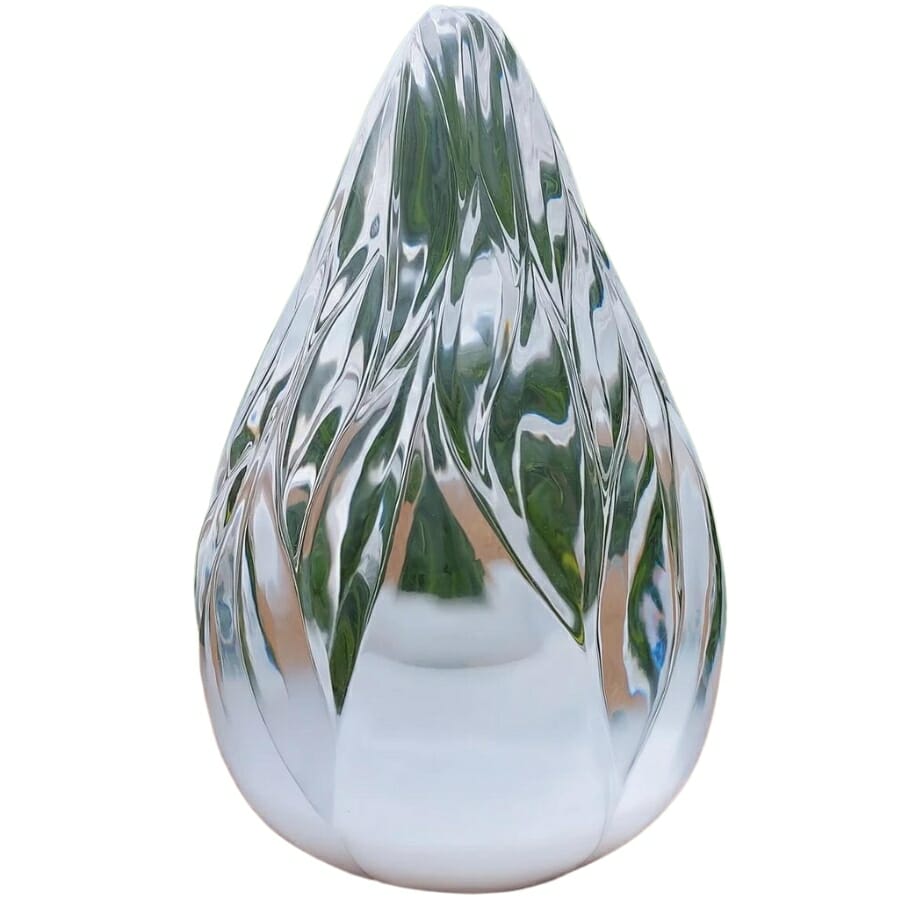
Hardness is a way to measure how tough or resistant a material is to scratch. Think about how scratching a chalkboard is different from scratching a metal door.
The metal door is stronger than the chalkboard and won’t get scratched as easily. Now, let’s compare how hard quartz is to how hard glass is.
Quartz is a pretty hard material. Scientists use the Mohs scale to measure how hard something is. Quartz gets a 7 out of 10. This means that it is harder than many other minerals and materials.
Most common things wouldn’t be able to leave a mark on quartz if you tried to scratch it. Quartz is much harder than glass. On the same Mohs scale, glass is usually around the 5.5 mark.
So, while it’s still pretty hard, it’s not as hard as quartz and is easier to scratch. That’s why old windows or glasses might have scratches.
Price – Quartz is more expensive
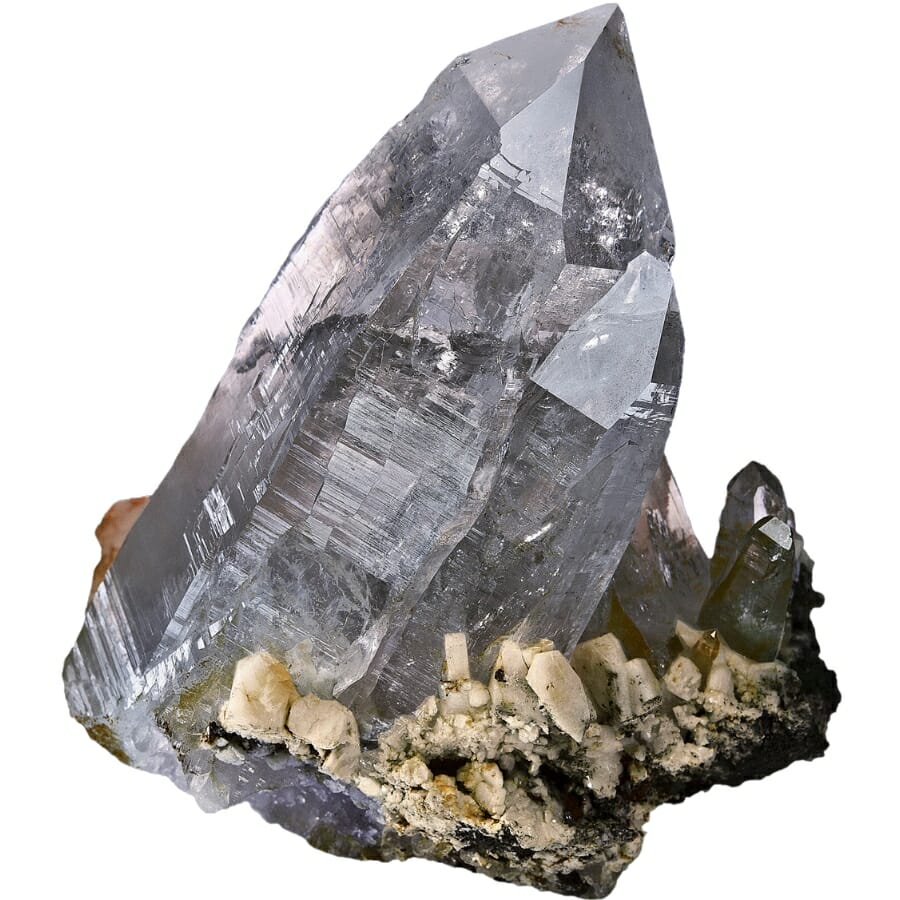
So, let’s talk about how much quartz and glass cost and what makes them different.
Starting with quartz, the price of it can change quite a bit. Some pieces made of quartz are pretty cheap. But there are also more expensive types of quartz, especially the shiny ones used in jewelry.
It’s like the difference between buying regular shoes and those super-popular brand-name sneakers everyone wants. The price of quartz goes up with how fancy it is.
Moving on to glass. Items made of glass that we use daily, like windows and drink bottles, don’t usually cost much. We’ve improved at making basic glass over time, so we can make much of it without spending too much.
But special glasses, like ones with sculptures or designs that aren’t found anywhere else, can cost much more. They take more work, skill, or materials that aren’t as common.
Streak – Glass has no streak
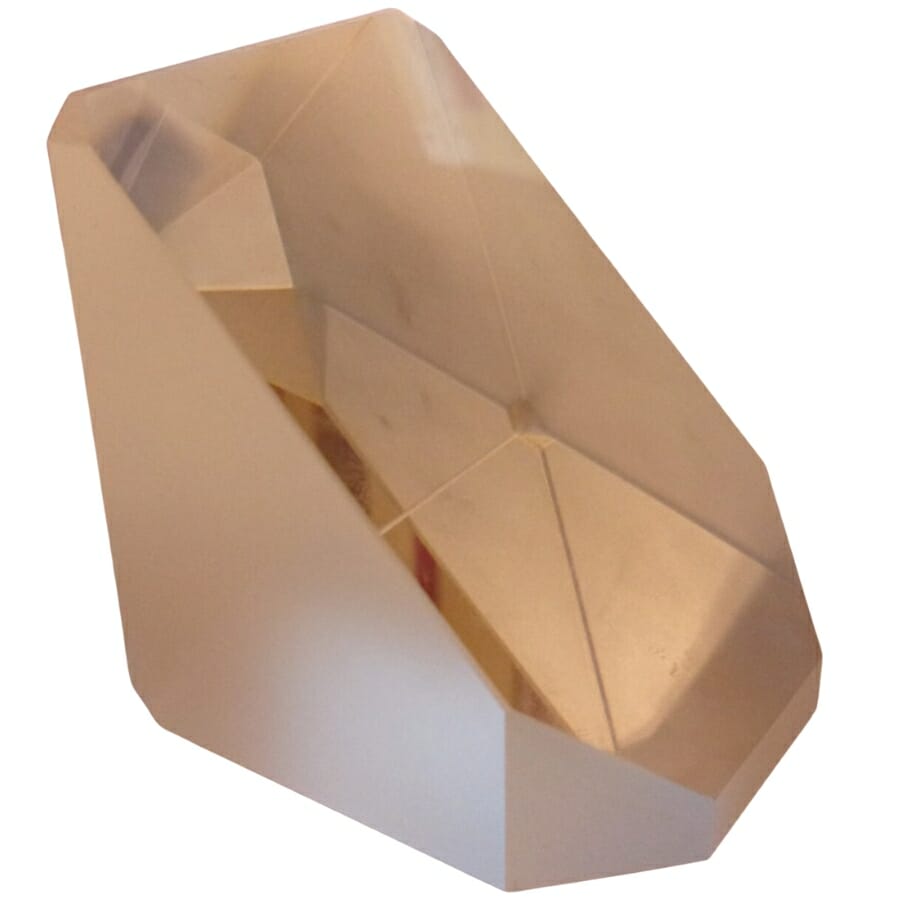
“Streak” might sound like something you see in the sky when a shooting star goes by, but it means something else in the world of minerals and rocks.
When a mineral or material is rubbed against something rough, like an unglazed piece of porcelain, it leaves a color behind. It’s kind of like drawing with crayons on paper. Let’s look at how this is different between quartz and glass.
When you look for a streak in quartz, you usually see a white line. It’s the thing it’s known for. So, if you took a piece of quartz and rubbed it on a rough surface, you would likely see a white streak.
Glass, on the other hand, is trickier. Since it’s harder than the porcelain plates usually used for streak tests, it might not leave any color. It might just scratch the plate instead.
You’ll get the idea if you’ve ever accidentally seen someone scratch glass with a rough object.
Glass vs. Quartz – The Similarities
After discussing how glass and quartz are different, we’ll discuss how they’re the same. Even though they have more things in common than differences, it’s still important to know these characteristics.
Cleavage – Both quartz and glass don’t have a cleavage
When you hear it, you might wonder what the word “cleavage” means about rocks and minerals. In this case, cleavage is about how a mineral or material breaks along specific lines or planes.
It’s kind of like how some chocolate bars have lines on them to make it easy to break off pieces. Let’s talk about how quartz and glass break the same way.
Experts say neither quartz nor glass has “true cleavage,” which is interesting. This means they don’t do so in straight lines like some minerals do when they break.
Quartz and glass both break in what is called a “conchoidal fracture.” This fancy word means that they break in shell-shaped curves.
If you’ve ever looked inside a seashell and seen the smooth, curved surface, that’s a lot like how quartz and glass break.
Colors – Glass and quartz have various colors
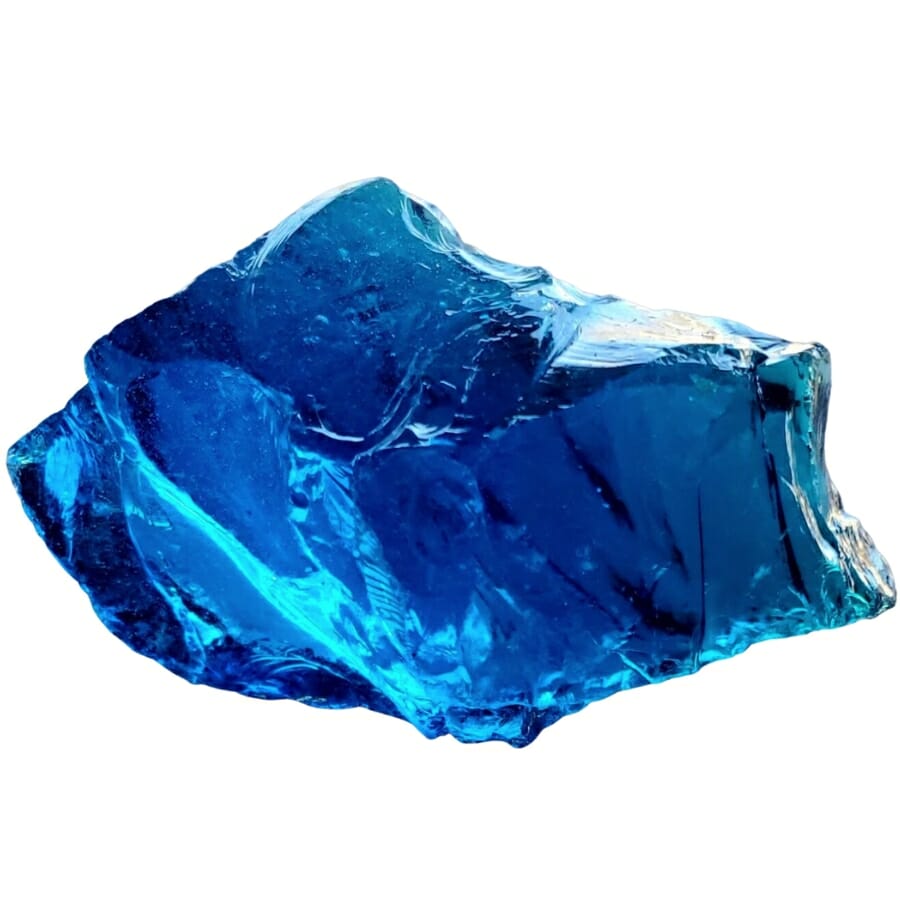
Color is one of the first things we notice about things, and it can be interesting to see all the different shades and hues in the world around us. Let’s talk about the colors that quartz and glass might have.
Quartz and glass can both be many different colors. When we think of glass, we often think of something clear, like a windowpane or a glass of water.
In the same way, many beautiful pieces of quartz are clear and see-through. But the story doesn’t end there!
Quartz comes in various colors, from purple (like the popular amethyst) to yellow, pink, and even smoky gray. When the quartz forms, different minerals and conditions give it these colors.
In the same way, glass can be made in many different colors. When making glass, artists can make it blue, red, green, or almost any other color you can think of by adding different materials or minerals.
Conductivity – Neither quartz nor glass conduct electricity
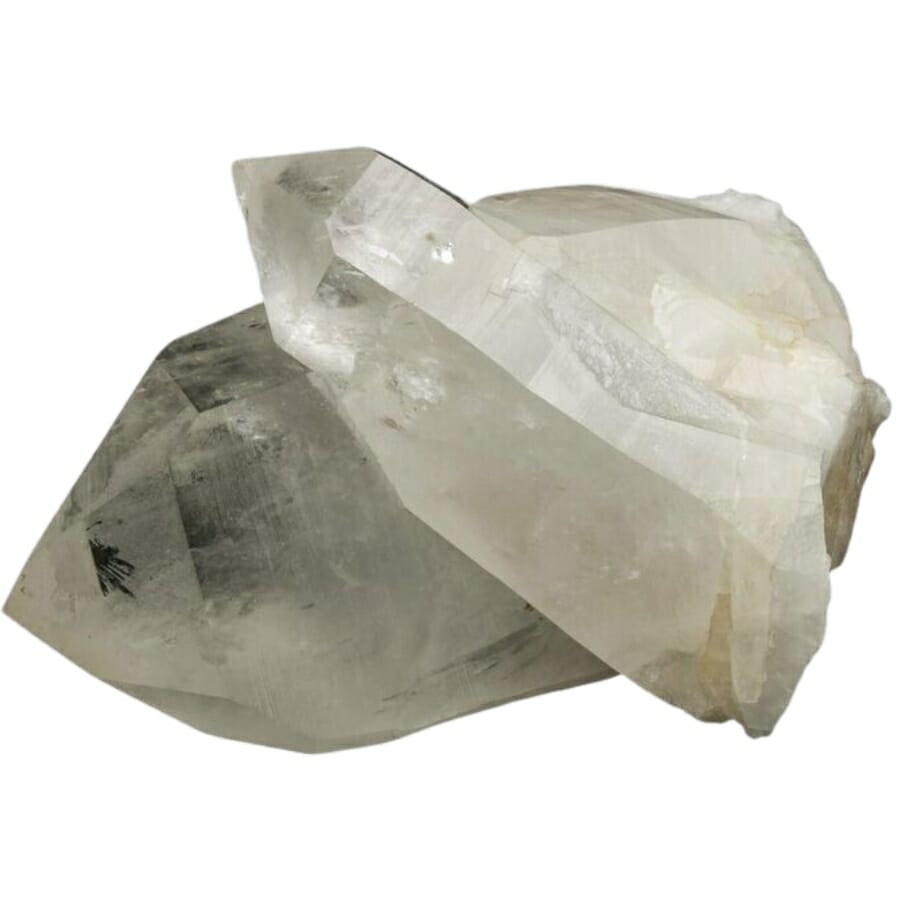
Conductivity is a big word for how well something can move energy, like heat or electricity, from one place to another.
When we touch a metal spoon in a hot pot, we feel the heat quickly because metal is a good conductor. Let’s look at how quartz and glass are good conductors.
When conducting electricity, neither quartz nor glass are the best. They both block electricity. This means that it is hard for electricity to move through them.
So, electrical wires are usually covered with materials that keep the electricity inside the wire and don’t let it get out.
Quartz and glass also act the same way when it comes to heat. Even though they can get hot, they don’t transfer heat as quickly as metal or other materials.
Quartz and glass are on the same team regarding how well they conduct electricity. They would rather keep the electricity and heat for themselves than give it to others quickly. It’s one of the many reasons they are used in safety tools and gadgets.
Density – Glass and quartz almost have the same density
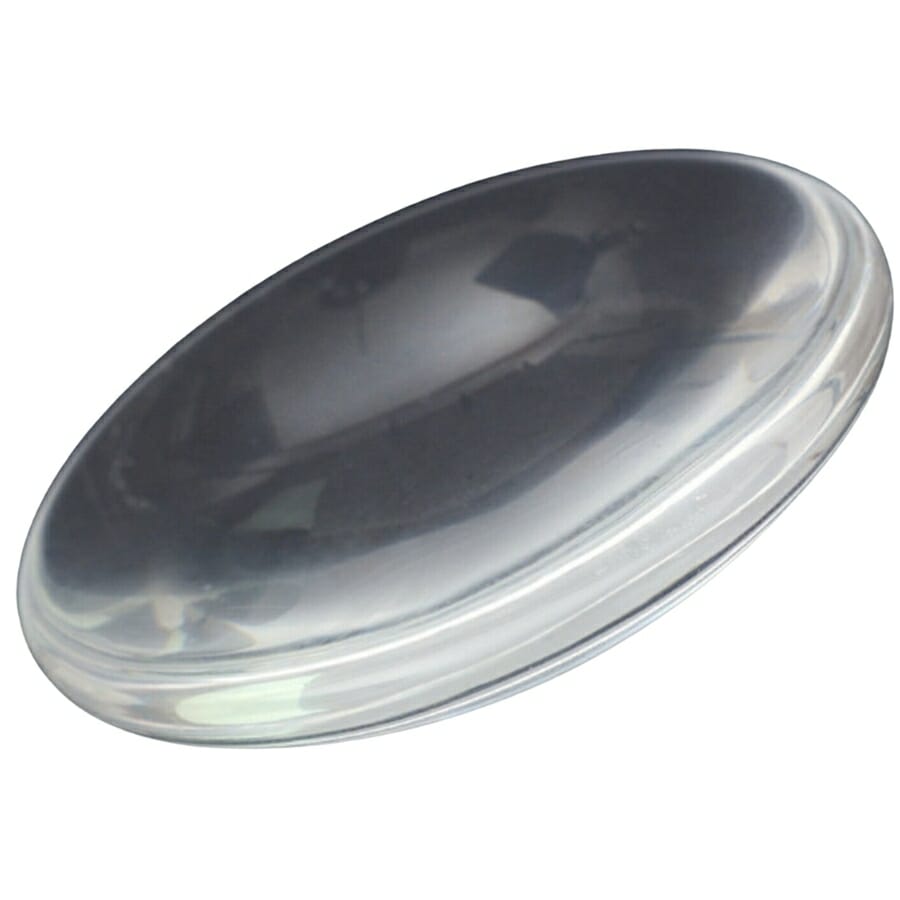
Density is a way to measure how much stuff fits into a certain space. Think of two boxes that are the same size, but one is full of feathers and the other is full of rocks.
The box with rocks would have more “stuff” in the same space, making it denser. Now, if we look at how dense quartz and glass are, we can see they have some things in common.
Both are made of pretty sturdy materials and feel heavy for their size. That’s because the tiny pieces that make them up, called molecules, are packed together closely.
But they are not identical twins, even though they are both dumb. Quartz is usually a little bit heavier than other kinds of glass. Most of the time, though, the difference isn’t that big, and for most everyday uses, they might seem about the same weight.
So, on a scale from very light like air to very heavy like gold, quartz and glass are kind of close to each other because they are both in the “fairly dense” zone.
Location – Both quartz and glass can be found worldwide
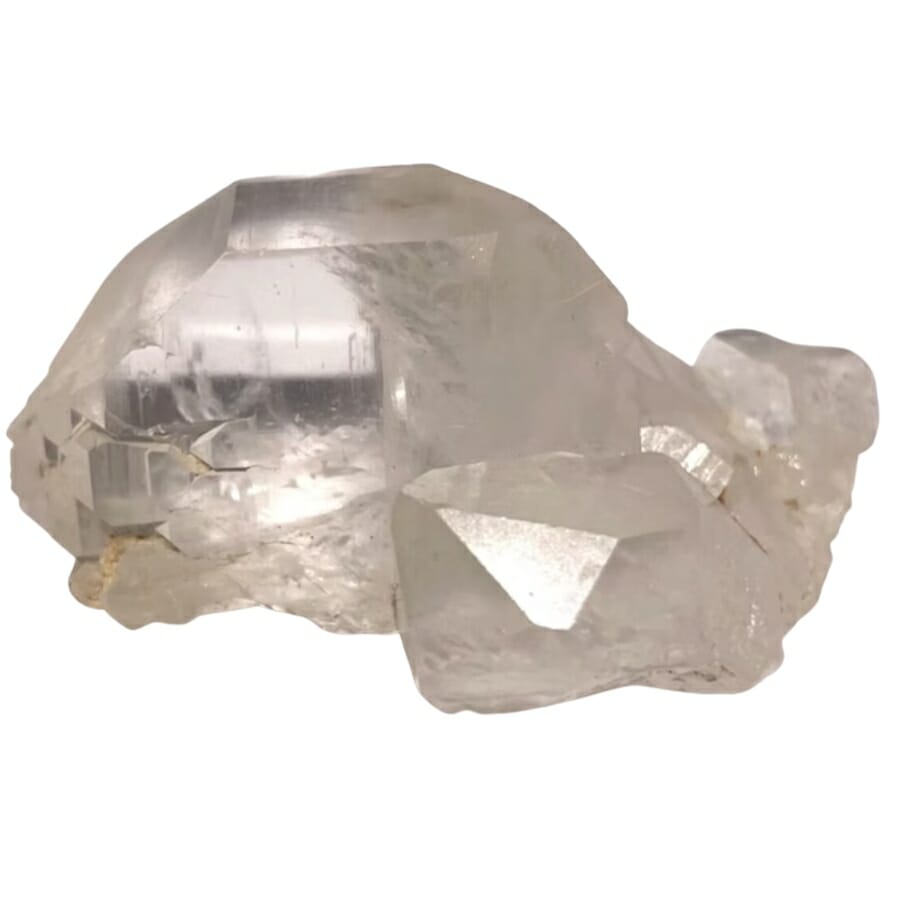
The place where these rocks are found can tell you about their history. Rockhounding is a fun thing to do, and there are excellent places to rockhound to find quartz and glass.
Quartz is a mineral made by nature, and it is found in many places on Earth. It’s one of the most common minerals in the crust of the Earth.
It can be found everywhere, from sandy beaches and mountains to deep underground. So, traveling worldwide, you’ll probably find quartz in many different places.
Glass is a little different because people make it. But because it’s so useful, you’ll see it everywhere. Glass is all around us, from big cities with tall glass skyscrapers to small villages with glass windows in homes.
Ultimately, quartz and glass are world travelers, but in different ways. Quartz is found naturally worldwide, while glass is used in almost every part of our daily lives thanks to people.
Check out our guide on how to find crystals near you to improve your chances of finding quartz and glass.
Luster – Glass and quartz have a vitreous luster
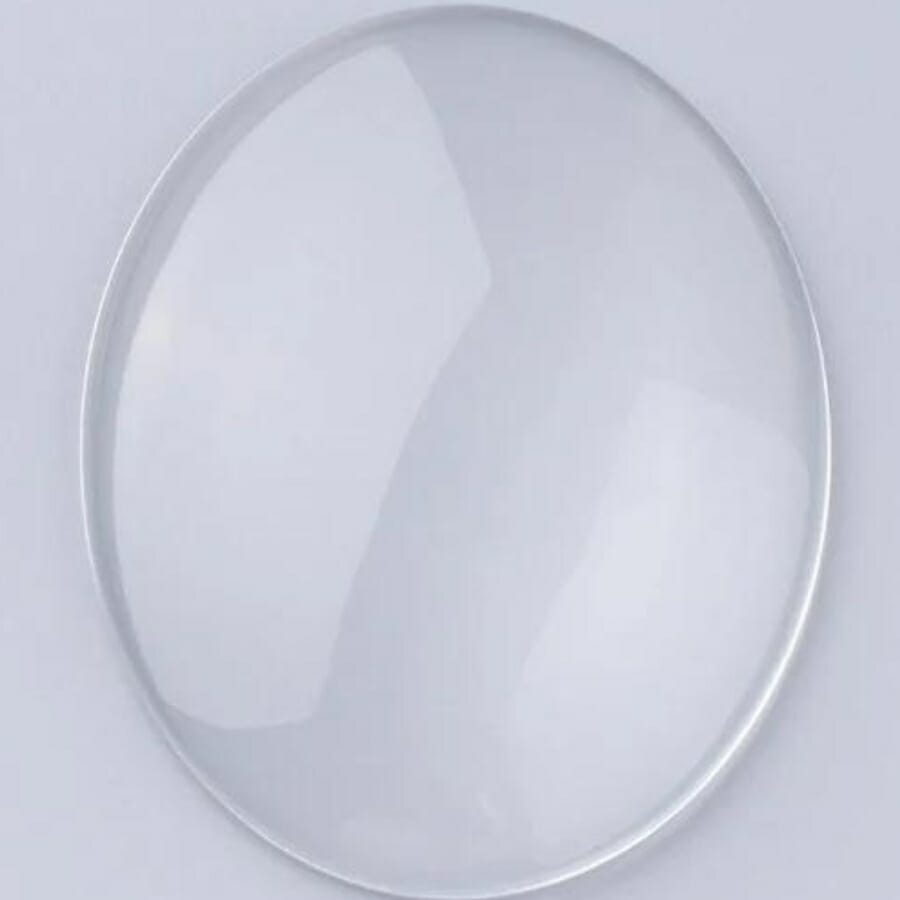
Luster is a fancy word for how something shines or reflects light. It’s like the difference between a brand-new toy and an old one that has lost its shine. Let’s talk about how quartz and glass shine, or luster.
Quartz shines pretty well. When you look at a piece of quartz that has been polished or cleaned, it can sparkle and reflect light in a really eye-catching way. It has a “vitreous luster,” meaning it shines like glass.
When we talk about glass, it shouldn’t be surprising that it also has a vitreous luster. So windows, drinking glasses, and other things made of glass can be so clear and shiny.
They reflect light in a way that lets us see right through them, and they can sparkle like quartz.
Magnetism- Neither quartz nor glass are magnetic
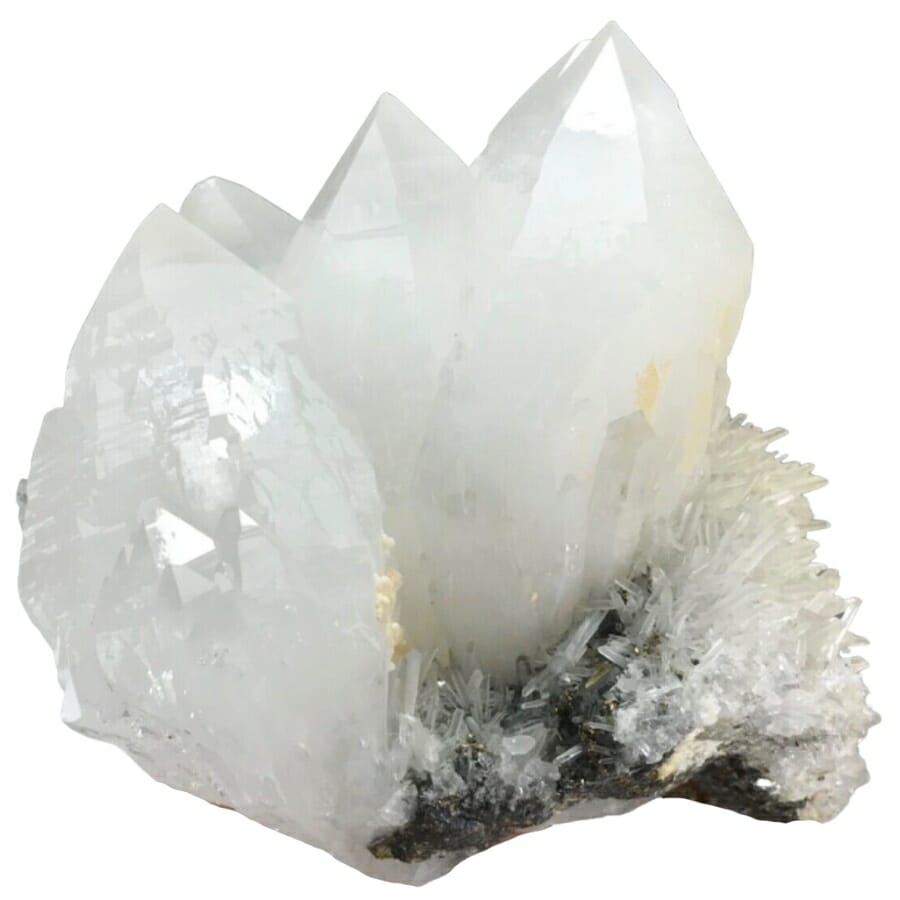
Magnets can hold notes, stick to your fridge, and even move toys. But magnets don’t pull everything toward them. Let’s see how magnetism affects quartz and glass.
Here’s the deal: neither quartz nor glass is magnetic. That means you couldn’t use a regular magnet to pick up a piece of quartz or a broken piece of glass. Just like some metals, they don’t get pulled toward magnets.
Both quartz and glass are often used when it’s a good thing that they aren’t magnetic. If you think about electronics or watches, you wouldn’t want magnets to mess up the parts inside, right?
That’s one reason why so many things we use daily are made from these materials.
So, in the world of magnets, quartz, and glass are kind of like the non-magnetic couple. They are both very good at not being drawn to magnets, which is cool.
The Easiest Ways To Tell Quartz and Glass Apart
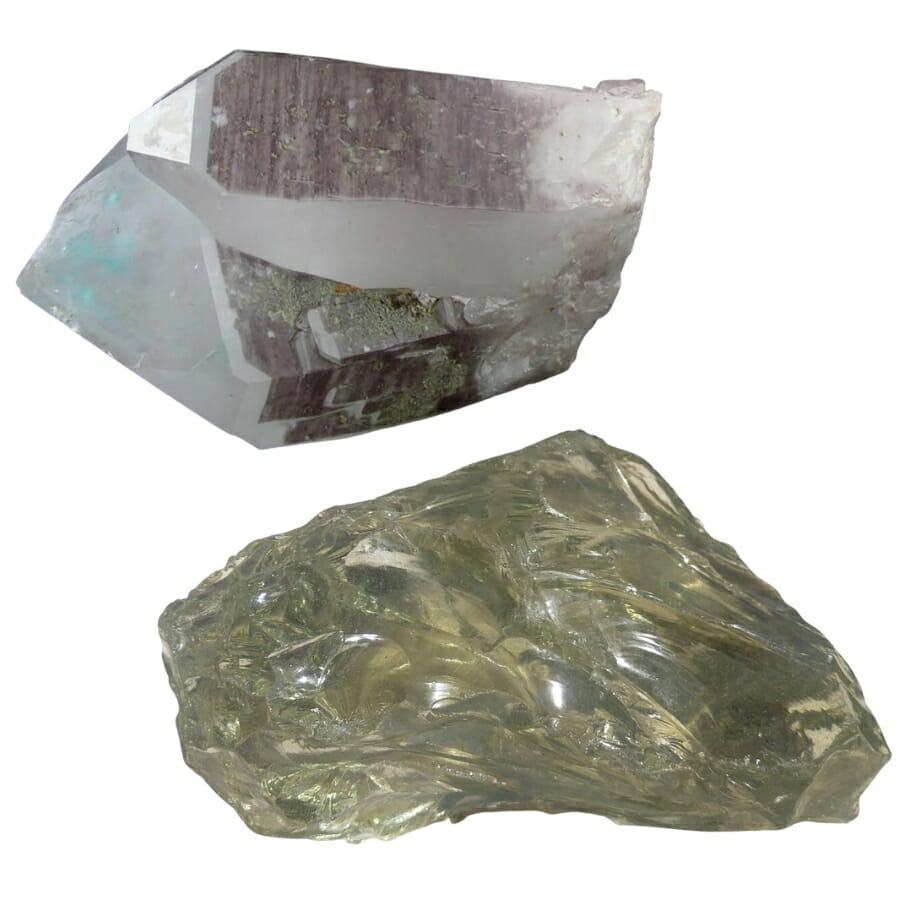
If you look at more than one feature, it can be easy to tell the difference between a quartz and a glass. Trying to figure out what makes them different is fun. Even though they have some things in common, there are a few key differences that you should be aware of.
Examine the edges or broken parts
When quartz breaks, it often does so in a way that looks like a shell. A conchoidal fracture is what this is called.
This is also how glass breaks, but the patterns in quartz are usually more clear and rough. When glass breaks or shatters, it might give you sharp and smooth edges.
Feel the cold touch
Even if the room is warm, if you pick up the piece and it feels cold, it might be quartz. Quartz is great at staying cold, while glass tends to be slightly warmer than its surroundings.
So, if you’re in a normal room and the piece feels like it’s been in the fridge, you’re probably holding quartz.
Where you found the piece
Quartz is more likely to be what you found while hiking up a mountain or walking along a riverbed. People make glass, not nature.
So, unless someone dropped a glass bottle into that mountain stream, you’re probably looking at a piece of quartz.

